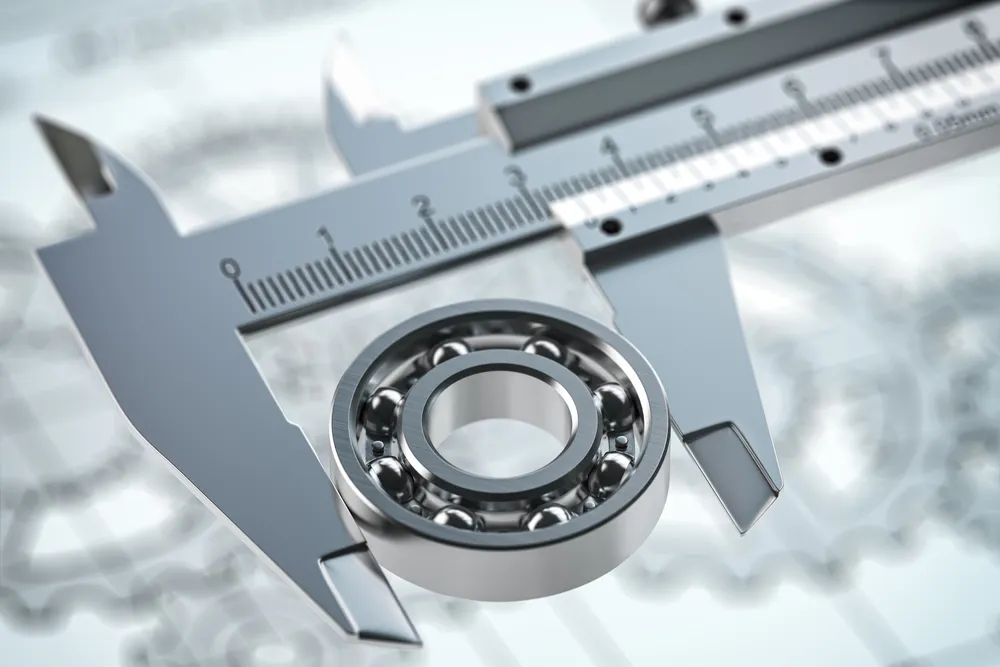- Introduction: The Importance of Bearing Precision Grades
In modern industrial systems, bearings play a decisive role in ensuring smooth operation, reliability, and efficiency. However, not all bearings are created equal. The accuracy and precision of a bearing can significantly influence its performance, lifespan, and suitability for specific applications. To standardize these differences, the industry uses precision classification systems known as ABEC (Annular Bearing Engineering Committee) for ball bearings and RBEC (Roller Bearing Engineering Committee) for roller bearings. These grading systems establish strict criteria for dimensional and geometrical tolerances, providing engineers with a clear reference when selecting bearings for precision-critical environments.
- Classification Overview: ABEC and RBEC Grades
Bearings are categorized into various grades that indicate their level of precision. For ball bearings, the recognized classes are ABEC 1, ABEC 3, ABEC 5, ABEC 7, and ABEC 9. Similarly, roller bearings are assigned grades RBEC 1, RBEC 3, RBEC 5, RBEC 7, and RBEC 9. The higher the number, the tighter the tolerances and the higher the bearing’s precision.
For tapered roller bearings, a different grading system is used, tailored to their unique geometry and application requirements. Regardless of the system, the principle remains consistent: a higher grade number means greater accuracy, smoother motion, and improved speed capability.
- Dimensional and Geometric Tolerances: What the Grades Define
Each ABEC or RBEC grade specifies two major tolerance aspects: dimensional and geometric.
- Dimensional tolerances govern the basic boundary measurements such as inner diameter, outer diameter, and bearing width.
- Geometric tolerances define the roundness, taper, runout, and parallelism of bearing components.
These factors directly affect bearing vibration levels, rotation smoothness, and overall mechanical stability. Even microscopic variations in roundness or parallelism can lead to measurable differences in torque, speed consistency, and noise level during operation.
- Selecting the Appropriate Bearing Grade
Choosing the right precision grade requires a balance between performance requirements, cost, and operational conditions. Engineers are advised to consider the following guidelines:
- Tolerance Accumulation Analysis: When determining component dimensions—especially in micro-sized ball bearings—designers should perform tolerance stack-up studies under both maximum and minimum material conditions.
- Performance Relationship: Different precision grades directly correlate with performance and lifespan. For example, misalignment in raceway parallelism increases torque peaks, while excessive runout causes rotational imbalance at high speeds, both of which can reduce bearing life.
- Cost vs. Benefit: Higher precision grades typically come at higher costs, so it’s essential to match the grade with the functional need. Over-specifying precision can lead to unnecessary expense.
- Applications of High and Standard Grades
- High-Grade Bearings (ABEC/RBEC 7–9):
These are used in precision-critical applications where minimal vibration, high rotational accuracy, and low torque are required. Common examples include aerospace instruments, machine tool spindles, robotics, and dental equipment. In these settings, even minute deviations can cause performance degradation or failure, making ultra-precise bearings indispensable. - Standard-Grade Bearings (ABEC/RBEC 1–5):
These are more cost-effective and suitable for a wide range of industrial and commercial uses such as automotive systems, electric motors, pumps, and general machinery. Although they have looser tolerances, they provide sufficient reliability and durability for less demanding environments.
- Understanding the Impact of Precision Grades on Performance
Bearing precision directly affects multiple operational parameters:
- Rotational Smoothness: Higher grades ensure less friction and vibration, leading to smoother rotation.
- Speed Capability: Tight tolerances minimize dynamic imbalance, allowing for higher operational speeds.
- Noise Reduction: High-grade bearings produce less acoustic emission, which is crucial in applications requiring quiet operation.
- Service Life: Precision manufacturing reduces internal stresses and wear, thus extending bearing lifespan under optimal conditions.
- Economic and Engineering Considerations
From an engineering perspective, bearing selection must balance performance goals and economic practicality. While high-precision bearings offer superior performance, they may be excessive for certain industrial operations. Conversely, using low-grade bearings in high-precision machinery can cause premature failure or costly downtime. Therefore, a strategic selection process—considering speed, load, temperature, and environmental conditions—is vital.
- The Future of Bearing Precision Standards
With the continuous evolution of manufacturing technologies and automation, the demand for higher bearing accuracy is growing. Modern advancements such as automated grinding, digital metrology, and real-time inspection are pushing the boundaries of achievable tolerances. Additionally, emerging hybrid designs and advanced coatings are improving bearing stability and precision even further.
As global industries pursue higher performance and reliability, the role of standardized precision grades will remain critical in maintaining quality assurance and design consistency across applications.
- Conclusion: Precision Grades as the Benchmark of Bearing Excellence
In summary, bearing precision grades serve as the universal language of accuracy in mechanical engineering. They define not only the geometric and dimensional limits of bearing manufacture but also establish the performance expectations for diverse industrial applications. Whether in aerospace, robotics, or general machinery, selecting the proper grade is essential to achieving the ideal balance between performance, cost, and durability.
Ultimately, understanding and applying these grading systems enables engineers to optimize machinery operation and ensure long-term system reliability — the very foundation of excellence in the world of precision bearings.
